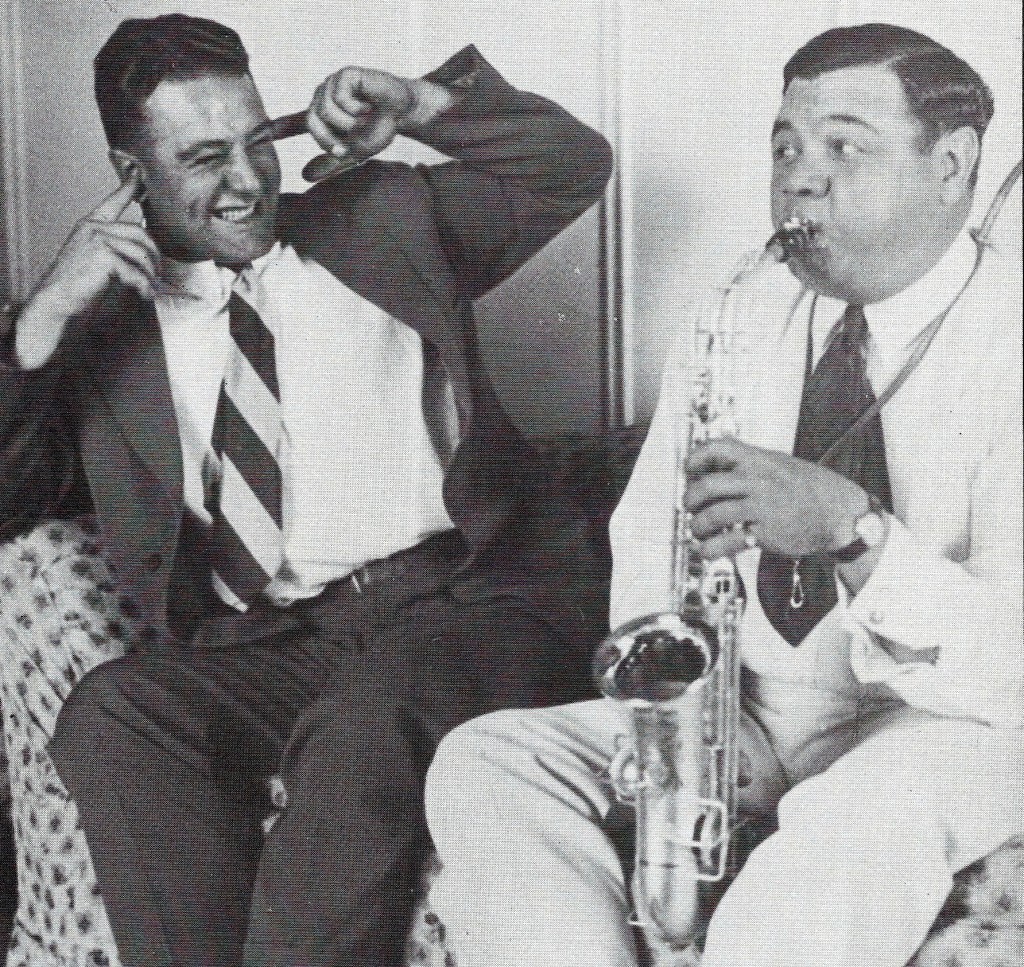The Baseball-and-Opera Building
Story Highlights
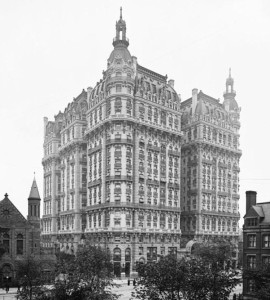 Once upon a time, a little pig lived with four geese on a rooftop farm high above the streets of New York City. The little pig’s name was Nanki-Poo.
Once upon a time, a little pig lived with four geese on a rooftop farm high above the streets of New York City. The little pig’s name was Nanki-Poo.
All of the information above appeared in a news story in The New York Times on November 12, 1907 about how the little pig’s owner’s father got wind of an impending raid by the Board of Health and had both pig and geese spirited into the basement. Opera fans might notice that the little pig had the same name as a key character in the comic opera The Mikado.
The pig’s owner was an 11-year-old boy known as “Weddie,” short for William Earl Dodge (W. E. D.) Stokes, Jr. His father was an heir to the Phelps Dodge fortune, so, when the senior Stokes used his money to create a spectacular residential hotel (which supported Nanki-Poo’s roof), he named it after his grandfather, Anson Greene Phelps, who had started the business that made him rich. Like the town in Connecticut also named for Phelps, the building was called the Ansonia. Its roof was covered in family copper.
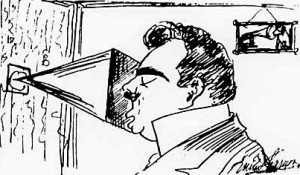 Construction began in 1899, and it opened officially in 1904 (though it had already been in use). It’s still standing and is still one of the most glorious buildings in the neighborhood; the architecture of a more-recent residential tower was intended to echo the Ansonia’s Second Empire style. It became an official New York City landmark in 1972 and joined the National Register of Historic Places in 1980.
Construction began in 1899, and it opened officially in 1904 (though it had already been in use). It’s still standing and is still one of the most glorious buildings in the neighborhood; the architecture of a more-recent residential tower was intended to echo the Ansonia’s Second Empire style. It became an official New York City landmark in 1972 and joined the National Register of Historic Places in 1980.
It was certainly grand. It had the world’s largest indoor swimming pool at the time it opened (as well as a second pool) and the first indoor miniature golf course. Live seals are said to have cavorted in the lobby fountain. Weddie later reported that a pre-Nanki-Poo rooftop farm “included about 500 chickens, many ducks, about six goats, and a small bear” (in divorce proceedings against the elder Stokes, his wife claimed he kept 47 chickens in his apartment). Others have mentioned a cattle elevator to the rooftop farm. Eggs were reportedly delivered to tenants, the excess sold in a basement food market. There was a full kitchen on each floor for room service. The Ansonia initially generated its own electricity.
The exceptionally thick and solid walls contained pneumatic tubes for message delivery and near-freezing-brine cooling pipes used to keep the rooms at a constant temperature and to deliver ice water. The climate control, 24-hour room service, and thick walls made the building a natural residence for opera singers.
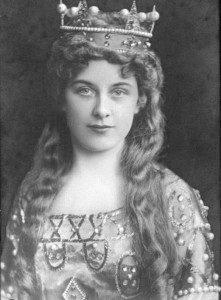 Among those who could be found there were Licia Albanese, Frances Alda, Karin Branzell, Enrico Caruso, Bruna Castagna, Lina Cavalieri, George Cehanovsky, Fyodor Chaliapin, Franco Corelli, Alessio De Paolis, Emmy Destinn, Geraldine Farrar, Olive Fremstad, De Wolf Hopper, Herbert Janssen, Alexander Kipnis, Victor Maurel, Lauritz Melchior, Jan Peerce, Roberta Peters, Ezio Pinza, Lily Pons, Elisabeth Rethberg, Bidu Sayao, Tito Schipa, Friedrich Schorr, Elisabeth Schwartzkopf, Antonio Scotti, Eleanor Steber, Teresa Stratas, Joan Sutherland, Renata Tebaldi, Richard Tucker, and Thelma Votipka (who sang more performances at the Metropolitan Opera than any other woman). There were also opera conductors Richard Bonynge, Fausto Cleva, Gustav Mahler, and Arturo Toscanini; opera composers Sergei Rachmaninoff and Igor Stravinsky; and impresarios Giulio Gatti-Casazza and Sol Hurok.
Among those who could be found there were Licia Albanese, Frances Alda, Karin Branzell, Enrico Caruso, Bruna Castagna, Lina Cavalieri, George Cehanovsky, Fyodor Chaliapin, Franco Corelli, Alessio De Paolis, Emmy Destinn, Geraldine Farrar, Olive Fremstad, De Wolf Hopper, Herbert Janssen, Alexander Kipnis, Victor Maurel, Lauritz Melchior, Jan Peerce, Roberta Peters, Ezio Pinza, Lily Pons, Elisabeth Rethberg, Bidu Sayao, Tito Schipa, Friedrich Schorr, Elisabeth Schwartzkopf, Antonio Scotti, Eleanor Steber, Teresa Stratas, Joan Sutherland, Renata Tebaldi, Richard Tucker, and Thelma Votipka (who sang more performances at the Metropolitan Opera than any other woman). There were also opera conductors Richard Bonynge, Fausto Cleva, Gustav Mahler, and Arturo Toscanini; opera composers Sergei Rachmaninoff and Igor Stravinsky; and impresarios Giulio Gatti-Casazza and Sol Hurok.
The copper was sacrificed to the war effort in 1942. There’s no longer a lobby fountain, and the skylight over the 180-foot-high grand staircase has been covered, but the thick walls ensure that the building still houses plenty of musicians, although there’s no overt indication of that. There is a small “museum” of artifacts in the lobby, but they all relate to a resident much better known for his work on the ball field than on the opera-house stage: 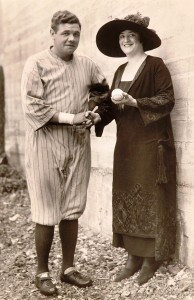 Babe Ruth. By the time he moved in, perhaps because it was close to a major station of the new subway, the Ansonia was already a regular stop for visiting baseball teams (as well as housing some local players).
Babe Ruth. By the time he moved in, perhaps because it was close to a major station of the new subway, the Ansonia was already a regular stop for visiting baseball teams (as well as housing some local players).
Besides Ruth, other baseball players who could be found at the Ansonia included “Pete” Alexander, “Sleepy Bill” Burns, Ty Cobb, Jean Dubuc, Lou Gehrig, “Shoeless” Joe Jackson, Connie Mack, John McGraw, Bob Meusel, “Lefty” O’Doul, Wally Schang, and “Honus” Wagner. It’s where the 1919 Black Sox scandal was arranged in “Chick” Gandil’s room (it was also home to gambler Arnold Rothstein, who “saw” that the fix was in by watching one of the opera-house game displays installed there). Ray Chapman was staying at the Ansonia the day he was fatally hit by a pitch, the only player in Major League Baseball history to have been killed that way. Jason Giambi went to see his physical therapist there. John Murtaugh, called “the best college first baseman” by future Hall of Fame inductee Hughie Jennings, died at the Ansonia after accidentally consuming “Roach salt” (an insecticide) instead of “Rochelle salt” (a mild laxative).
Baseball’s first agent, Christy Walsh, started there, getting to see Ruth by delivering a case of beer to his apartment. Walsh helped make Ruth rich. Something that helped enrich another player, a decision to invest in Coca-Cola, was made in Ty Cobb’s room at the Ansonia in 1918.
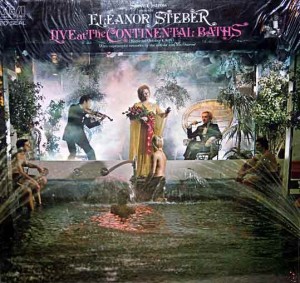 The hallways of the Ansonia are exceptionally wide and long. Melchior is said to have practiced archery in them. Ruth, who took advantage of the thick walls to practice his saxophone, would also step into the hallway in his red silk robe and take the elevator to the basement barber for his daily morning shave. Melchior, too, went down to the basement in his robe; he was too big to fit in a bath tub and used one of the pools instead. In 1973, Steber recorded an album in the basement, which, by that time, had become the Continental Baths (where the careers of Bette Midler and Barry Manilow took off); the audience wore black towels for the opera-music recording.
The hallways of the Ansonia are exceptionally wide and long. Melchior is said to have practiced archery in them. Ruth, who took advantage of the thick walls to practice his saxophone, would also step into the hallway in his red silk robe and take the elevator to the basement barber for his daily morning shave. Melchior, too, went down to the basement in his robe; he was too big to fit in a bath tub and used one of the pools instead. In 1973, Steber recorded an album in the basement, which, by that time, had become the Continental Baths (where the careers of Bette Midler and Barry Manilow took off); the audience wore black towels for the opera-music recording.
Enrico Caruso was reportedly asked what he thought of Ansonia resident Babe Ruth. “I don’t know,” he is said to have replied. “I never heard her sing.”
